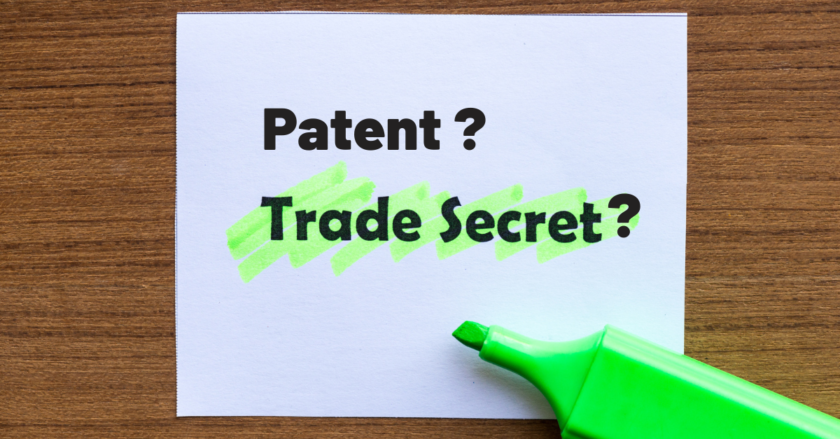As a business owner, it’s critical to be across ways to protect your business’ secret weapons and Intellectual Property. One highly desirable form of intellectual property protection across various industries is patent protection.
However, it’s important to note that there has always been some confusion about whether an invention is capable of being patentable or whether it is merely a trade secret.
There are essential distinctions between patent protections and trade secrets. Understanding the difference between patent protection and merely a trade secret can help save you time and money
Our latest article explains how your conduct concerning commercialising your invention could exclude it from being patentable.
What are the Patents Laws and Rules in Australia?
First and foremost, it is important to note that the rules and criteria for patentability differ in each country. In Australia, an invention that is capable of patentability must be:
- novel, useful and inventive.
- it can be a process, product, or method.
Subject matter that is not capable of patenting can include discoveries, schemes and mathematical formulae, amongst other things.
What can’t you do before applying for a patent?
To meet the patentability criteria in Australia, there are also specific things that a creator cannot do with the invention prior to application.
- Don’t disclose to the public: One of the most important and lesser-known rules is that the invention cannot be disclosed to the public by the creator before the application.
- Don’t sell the product: Another rule is that you cannot use your invention commercially before filing your patent application. However, in Australia, there is a 12-month grace period for commercialisation of the invention and experiments and trials are exempt.
What are the benefits of patenting your IP?
Registerable intellectual property is the preferred method for protecting your exclusive rights to your intellectual property.
- Competitive advantage and protection: Once patented, your invention cannot be developed by a competitor without impinging your rights as the patent owner.
- Legal Protection: The patent register can be available to the public, so your invention is no longer secret once patent protected. This benefits the patent holder as it means that anyone who develops the same product is an infringer.
- Protection from reverse engineering: A competitor cannot copy or reverse engineer your product, or even just develop the same invention by chance, without infringing your rights.
What are the risks of applying for a patent?
Before you apply for patent protection, it’s vital that you assess the risks in submitting a patent application for your invention before you get started.
- First, you must keep it under your hat, before someone else catches on
An inventor will want to keep their invention as secret as possible to avoid the risks of others developing the invention and filing a patent application first. As mentioned above, once the application for the patent is published, your invention is no longer secret. The downfall is that if you do not receive patent protection from your application, your invention is no longer secret and your exclusive intellectual property rights are impacted. - What happens if my patent application is rejected?
If unsuccessful, you could reveal more than you wanted without further protection. If you do not satisfy the patent criteria, your invention may need to remain a trade secret. It is important to understand that whilst developing a potentially secretive and highly commercial product, and you may already have a trade secret.
What is critical to note, however, is that your invention cannot simultaneously be classified and commercialised as a trade secret and a patent.
So how can you protect your trade secret? Let’s explore this further.
What is a Trade Secret?
If you are developing a product or method that is currently the subject of secrecy, then you may have a trade secret. Despite not having the protection which comes from patent protection, your trade secret still may hold significant commercial value.
Trade secrets can be used commercially and still be kept under a veil of secrecy. However, there are many examples of trade secrets being used commercially and successfully, such as the secret recipes in popular fast-food chains, like the secret herbs and spices for KFC.
How to protect your trade secrets
The protection you receive for a trade secret is significantly lower than a registerable piece of intellectual property. Therefore, if you have employees or contractors who may be privy to the trade secret, you must protect your rights. Businesses should take preventive measures to protect such trade secrets against theft or misappropriation, and these include the use of:
- Non-disclosure agreements (NDA): businesses should have employees and business partners sign a non-disclosure agreement that prevents them from disclosing confidential information.
- Non-compete agreements (NCA): employers should ask employees, contractors and consultants to sign a non-compete agreement to prevent them from starting their own business or working for a competitor when their employment/service agreement ends.
How can Morrows Help?
If you have a product or service that you believe may be patentable or may be an important trade secret, seeking the advice of an experienced Intellectual Property lawyer is essential. Morrows Legal Solutions are well equipped to assist you in ensuring that your IP rights are protected now and in the future.





